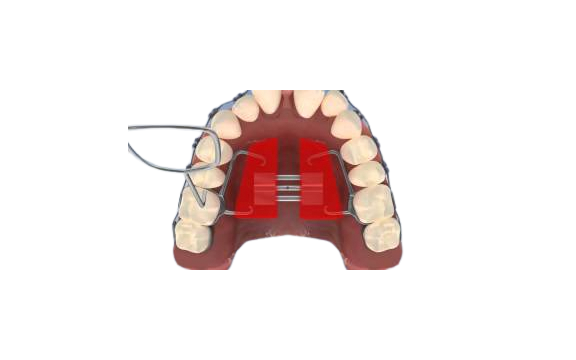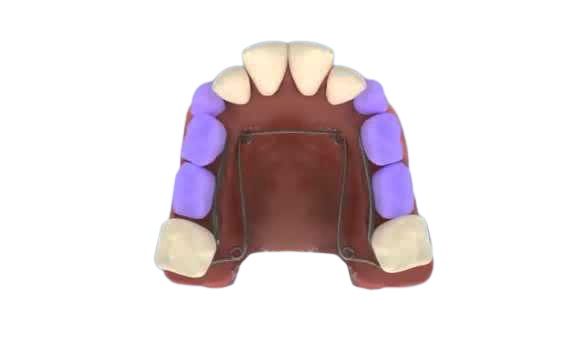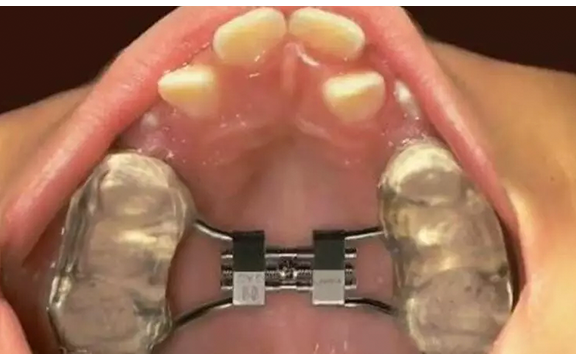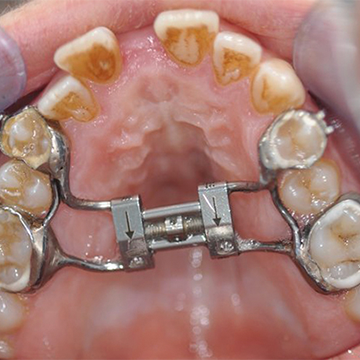Upper jaw expansion surgery is performed to treat a skeletally narrow upper jaw before orthodontic treatment.
Upper jaw expansion surgery, called Surgically Assisted Maxillary Expansion (SARME), is performed to increase the volume of the upper jaw in patients who have completed the growth and development period and whose jaws are too narrow for the planned orthodontic treatment.
In patients who have crowded teeth due to Cross Bite or jaw stenosis and who want to undergo orthodontic treatment, upper jaw expansion surgery is required to avoid extraction of the affected teeth.
Upper Jaw Expansion Surgery
In upper jaw enlargement surgery, multiple bone incisions are made in certain areas of the patient’s upper jaw. Thus, bone fusions = bone sutures, which are the obstacle to the expansion of the upper jaw with orthodontic appliance, are opened.
These incisions allow the upper jaw to expand symmetrically. After a recovery period of about seven days, the orthodontic appliance attached to the upper jaw is activated with a small key and the jaw expansion process is started.
The orthodontic appliance, which is usually rotated twice a day, provides 0.25 mm of expansion with each rotation.
How many weeks this process will take depends on the severity of the jaw stenosis. In all these stages, the maxillofacial surgeon and orthodontist should follow the process closely. Due to the separation of bone segments during the expansion process, a diastema (gap) is formed between the front teeth of the upper jaw, which is an indication that the treatment is progressing correctly.
Once the appropriate amount of expansion is reached, the expansion is terminated and the orthodontic appliance is left in the mouth for several months to allow the bone to heal. After complete healing, orthodontic treatments such as braces can be started.
Upper Jaw Expansion Surgery Recovery Process
Because of the complications involved in this surgery, it is more appropriate to perform it under general anesthesia. The patient may need to be observed in hospital for some time. After discharge from hospital, medicines will be prescribed for pain and infection control.
After surgery, it is very important not to practice effective oral hygiene and care as the upper jaw will have an orthodontic appliance. After each meal, all teeth and the appliance should be brushed with a soft-bristled toothbrush. Mouthwash and prescribed mouthwashes should be used after brushing.
Following surgery, applying a cold compress to the upper jaw area can help reduce swelling. As with other major surgeries, it is recommended to consume softer, grain-free and non-solid foods until the stitches are removed.










